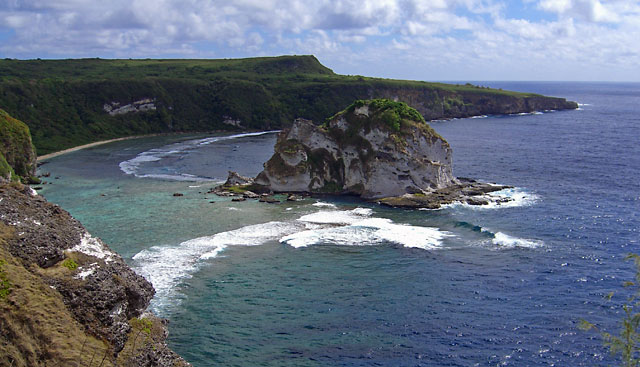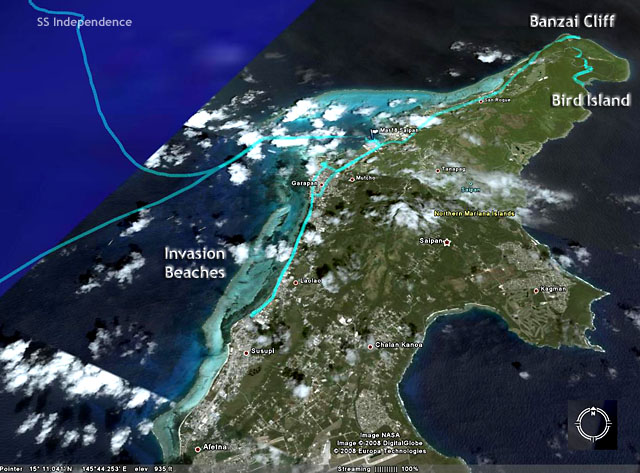
|
|
Google Earth Images with GPS Tracks
of Ship to and from Saipan and the
Land Tour (turquoise) |
| After
an overnight sail from Guam, the
ship arrived at Saipan, U.S.
Commonwealth of the Northern Mariana Islands.
The port is located on the west
central coast of the island, as the
GPS track shows.
I took
a Holland America tour which visited
Banzai Cliff, Bird Island, the
Invasion Beaches, and the American
Memorial Museum. The GPS track
of the tour is also shown. The bus
and guide were fine, but if I were
to do it again I would rent a car.
The roads are good and traffic rules
are the same as in the U.S. |
|
|
Docked at Saipan, Northern
Mariana Islands |
|
Local dancers performed
dockside to welcome the
ship.
Saipan was under German
control from 1899 to 1914
and under Japanese control
from 1914 to 1944. On
June 15, 1944, U.S. forces
assaulted the island and in a
bloody 3 week battle
defeated the Japanese
defenders. In 1986 by
a vote of the people the
CNMI joined the U.S.
|
|
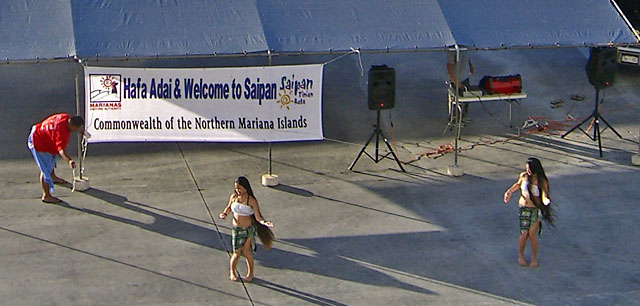 |
|

|
|
Northern Saipan from the Ship |
|
Saipan is quite mountainous, which
allowed the Japanese defenders to
construct formidable defensive
positions. Most of the west
coast has an off shore coral reef. |
|
|
Banzai Cliff |
This is the infamous
location where hundreds of
Japanese civilians jumped to
their deaths rather than be
captured and mistreated by
the "barbaric American
Troops". |
|
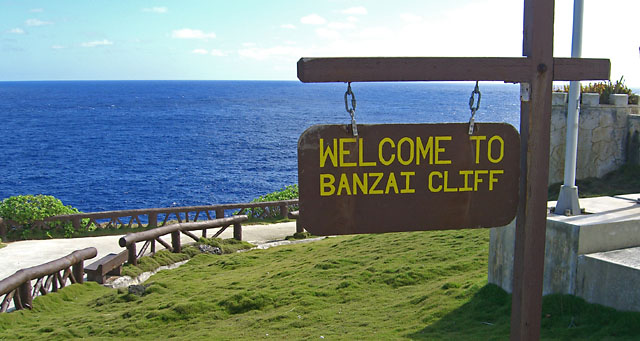 |
|

|
|
Banzai Cliff |
|
There were
many Japanese tourists visiting this
site. Additional memorials were
being constructed by the Japanese.
Some of the construction signs were
in Russian, because that's where
some of the workers were from.
|
|
|
Suicide Cliff |
|
Directly inland (south) from
Banzai Cliff was a high
mountain where additional
suicides occurred. The
steep north face is "Suicide
Cliff". |
|
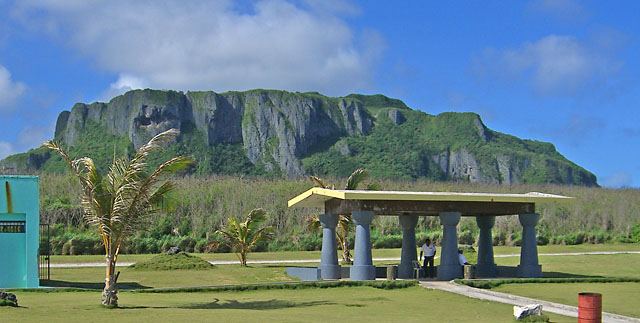 |
|
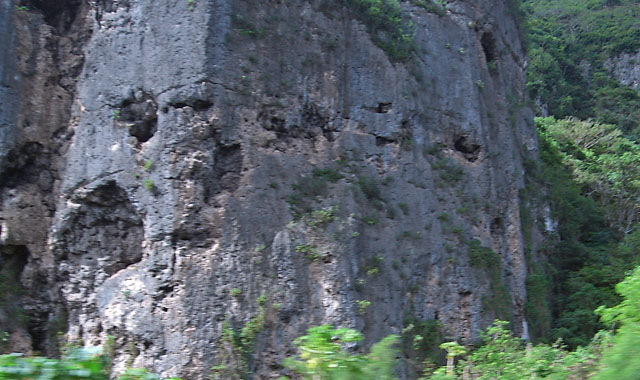
|
|
Suicide Cliff |
| A
teleview. The mountain has
many caves which were used as
defensive positions and also last
refuges for Japanese civilians.
The guide said the large gouges were
made by shells from American naval
guns.
|
|
|
Bird Island Sanctuary |
A
large scenic area on the
northeast coast of Saipan
run
by the CNMI Division of Fish
and Wildlife. |
|
 |
|
|
|
WW2 Memorial Park and Museum |
Run by the U.S. National Park
Service.
|
|
 |
|
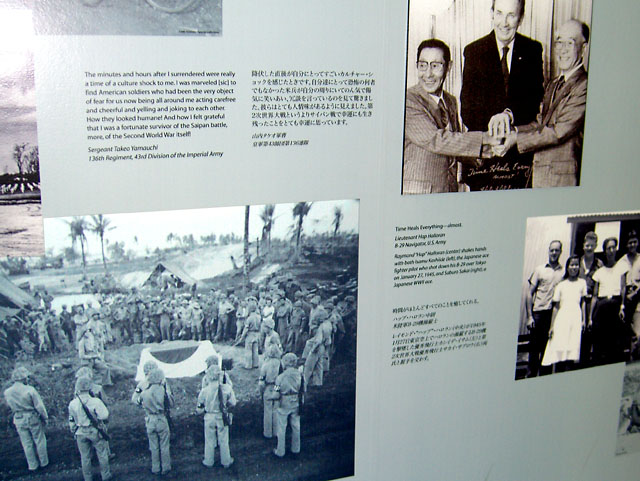
|
|
Museum Exhibit |
|
The two
captions visible read: "The
minutes and hours after I
surrendered were really a time of a
culture shock to me. I was marveled
(sic) to find American soldiers who
had been the very object of fear
among us now being all around me
acting carefree and cheerful and
yelling and joking to each other.
How they looked humane! And how I
felt grateful that I was a fortunate
survivor of the Saipan battle. More,
of the Second World War itself!"
Sergeant Takeo Yamauchi
136th Regiment, 43rd
Division of the Imperial Army
------------------------------------------------------------------
"Time Heals Everything – almost."
Lieutenant Hap Halloran
B-29 Navigator, U.S. Army
Raymond "Hap" Halloran (center)
shakes hands with both Isamu
Kashiide (left), the Japanese ace
fighter pilot who shot down his B-29
over Tokyo on January 27. 1945, and
Saburu Sakai (right), a Japanese
WWII ace.
|
|
|
Museum Exhibit |
The Museum had many exhibits
and a video of the U.S.
invasion. Most of the
items on display would be
familiar to any Korean War
vet, because our 1950
equipment was the same as
the WW2 equipment used here
in 1944.
|
|
 |
|

|
|
Landing Beaches
Landing
craft had to cross the reef en route
to the beach. (The trees were
planted after the war.) |
|
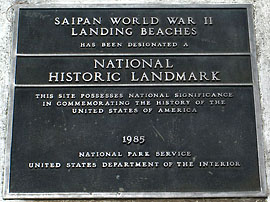
|
|
|
Landing Beaches |
Looking towards the reef
from the beach. We saw
two WW2 Sherman tanks
partially submerged in the
shallow water.
There were 4 large supply
ships anchored off shore
which are loaded with
equipment U.S. ground forces
would need if deployed to a
Pacific region. |
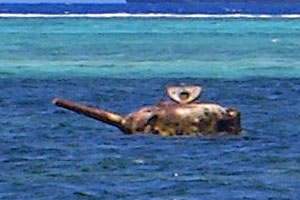 |
 |
|
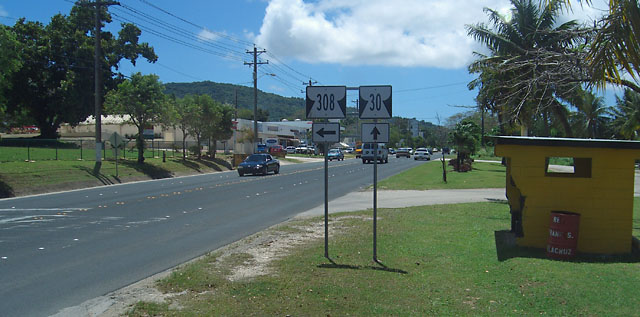
|
|
Saipan Street View |
|
Reminded me of some areas of
Florida, except for the mountains.
There was a Costco store on Saipan.
|
|
|
Departing Saipan |
From the ship. Note the
colorful water inside the
reef! |
|
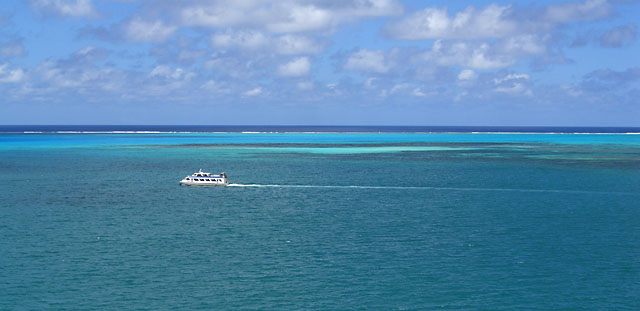 |
|
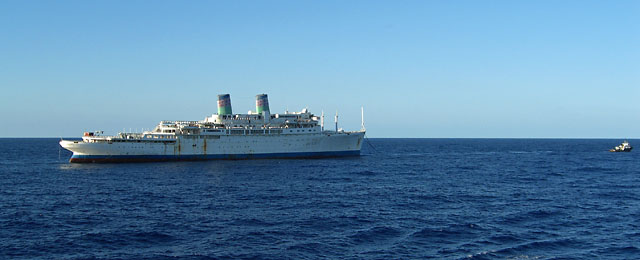
|
|
S.S. Independence |
|
A mile off
shore we saw the S.S. Independence
under tow enroute to the breaking
yards in Asia. This was until
recently one of two U.S. flagged
cruise ships based in Honolulu.
It was an actual steamship, not a
diesel-electric like almost all
cruise ships today.
The Statendam maneuvered around the
Independence and sounded its horn in
salute.
|
|
|








